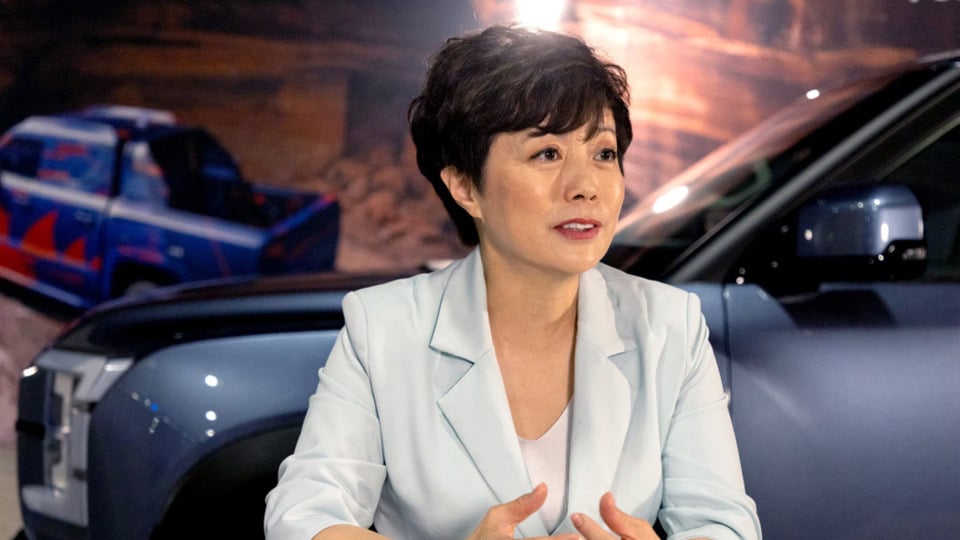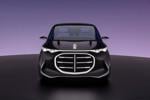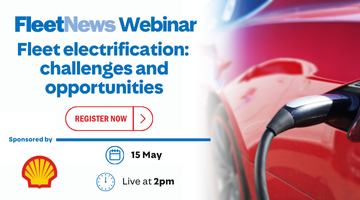BYD ended 2024 on a high in the UK: it became the fastest-growing car brand in the country last year when it sold 8,700 cars, a year-on-year increase of 658%.
It has started 2025 in the same way as it works towards its ambition – outlined by BYD executive vice-president Stella Li at last week’s UK launch of the Sealion 7 - of becoming the number one OEM in the world.
It is currently the sixth largest, although it is the leading EV manufacturer. Last year, one-quarter of all electric cars sold were BYD models.
The UK forms a key part of its global plans, with the corporate market playing a significant role.
Last year, fleet channels (Motability, rental, true fleet) accounted for 61% of BYD’s registrations in the UK, with true fleet at 47%.
“This journey really gained momentum in Q4 2024 with the launch of the Seal U DM-i, which was a model that really drove us forward,” says Steve Beattie, sales and marketing director at BYD.
“As 2024 came to a close, we achieved nearly 1% market share in December, passing legacy brands like Honda and Suzuki. It was an incredible milestone for us.
BYD ended 2024 on a high in the UK: it became the fastest-growing car brand in the country last year when it sold 8,700 cars, a year-on-year increase of 658%.
It has started 2025 in the same way as it works towards its ambition – outlined by BYD executive vice-president Stella Li at last week’s UK launch of the Sealion 7 - of becoming the number one OEM in the world.
It is currently the sixth largest, although it is the leading EV manufacturer. Last year, one-quarter of all electric cars sold were BYD models.
The UK forms a key part of its global plans, with the corporate market playing a significant role.
Last year, fleet channels (Motability, rental, true fleet) accounted for 61% of BYD’s registrations in the UK, with true fleet at 47%.
“This journey really gained momentum in Q4 2024 with the launch of the Seal U DM-i, which was a model that really drove us forward,” says Steve Beattie, sales and marketing director at BYD.
“As 2024 came to a close, we achieved nearly 1% market share in December, passing legacy brands like Honda and Suzuki. It was an incredible milestone for us.
“We also expanded our retail network to 60 nationwide and boosted our brand recognition to nearly 50%.”
This year has continued where 2024 let off. “We kicked off 2025 with massive optimism,” adds Beattie.
“In January we set a new record of 1,600 registrations, reaching a market share of 1.2% and even beating Tesla.
“Both the Dolphin and Seal claimed number one spot in their respective segments in the BEV private market.
“As we entered February, we kept that momentum going, and deliveries continue to be strong.
“We ended that month with nearly 1,200 registrations and a 1.4% market share and, remarkably, we were 22nd in the league table with the SMMT.”
Fleet sector key
The fleet sector has again been instrumental in this performance, with true fleet, Motability and rental accounting for 36% of these registrations (true fleet: 34%), with Li saying BYD has worked hard to overcome challenges the brand has faced.
This includes ensuring that fleet customers have access to “a five-star aftersales service”, she says, “not only with a BYD network, but with third-party service partners.
“We’ve just announced a partnership with Bosch, so as well as our dealer network Bosch has several hundred outlets as well, so we can now service fleet well – you need to have capacity with service points.”
As a relatively new brand in the UK, BYD has had to overcome unfamiliarity with the company in the market – with the OEM saying its brand recognition has grown from 1% in 2023, to 49% now – and has also worked with residual value evaluation experts to improve residual value predictions.
“They know BYD, they are working with us and see us as a very sustainable company,” says Li.
“BYD has a long-term vision. Our price stated stays; we don’t drop the price, and then as long as you keep sustainable growth, you take car of the residual value.”
Li says the impact of this approach is demonstrated by its success in France: “Data in the past month has the Atto 2 residual value four percentage points higher than our competition.”
A further element of breaking into the UK market has been working with leasing companies such as Ayvens and Black Horse. “The relationship after two years is working, with them knowing BYD and our technology,” says Li.
“Now the trust is there, they are willing to support us with competitive financing.”
Focus on innovation
A key part of BYD’s future plans is centred on innovation and the brand spent more then 4.4bn euros on research and development in the first three-quarters of last year, submitting an average of 45 patent applications each working day.
Last week it announced it had developed a new ultra-fast charging system for its electric cars that can add 250 miles of range in five minutes.
The one megawatt charging speed is around three times as fast as the current fastest charging system in passenger cars.
It is part of BYD’s Super-e platform, which will feature on the upcoming Han and Tang. Neither model is currently sold in the UK, but BYD says the tech will be brought to British roads when suitable charging infrastructure exists.
The Super-e platform combines a new Flash Charging Battery with new electric components that utilise a 1,000-volt architecture.
To demonstrate the enhanced charging capability, BYD has developed its own EV charger with a 1,360kW output. The company has announced plans to roll-out more than 4,000 of the megawatt charging stations across China.
“The goal is to make recharging as fast as refuelling combustion engines,” says Li. She says BYD plans to roll out megawatt charging network in Europe, “not now, but in a few years”.
She adds: “Firstly, we want to utilise the charging networks built up by third parties – for example, we have a partnership with Shell Recharge and we are open to more partnerships with different charging companies.
“We will continue to build up strong partnerships with them to utilise their charging networks first.
“We’ll only build when it’s necessary, when nobody else is building it.”
Li says BYD calls the delay between new technologies being launched in China and Europe the “catch-up”.
“In China, EV penetration is about 50% and we have all the infrastructure: everything is ready,” she adds.
“Each time we innovate, we can do it quickly, but taking it overseas may take three years.
“We need several years to build a model here, then do the R&D here, then we can verify and certify.
“The regulations are different, so we need to work with regulators. In Europe, also, it’s not just one market, it’s more than 20 countries with different certifications.
“This adds on a lot of work, and it also takes time.”
Login to continue reading.
This article is premium content. To view, please register for free or sign in to read it.




















Login to comment
Comments
No comments have been made yet.